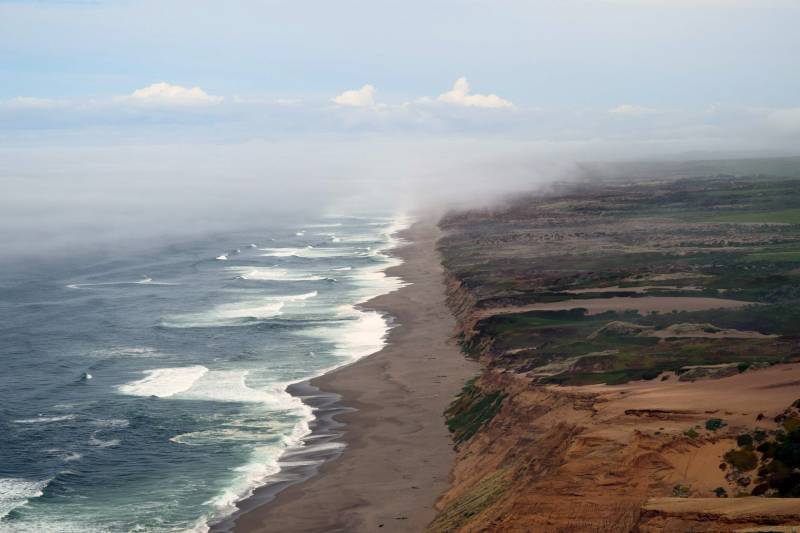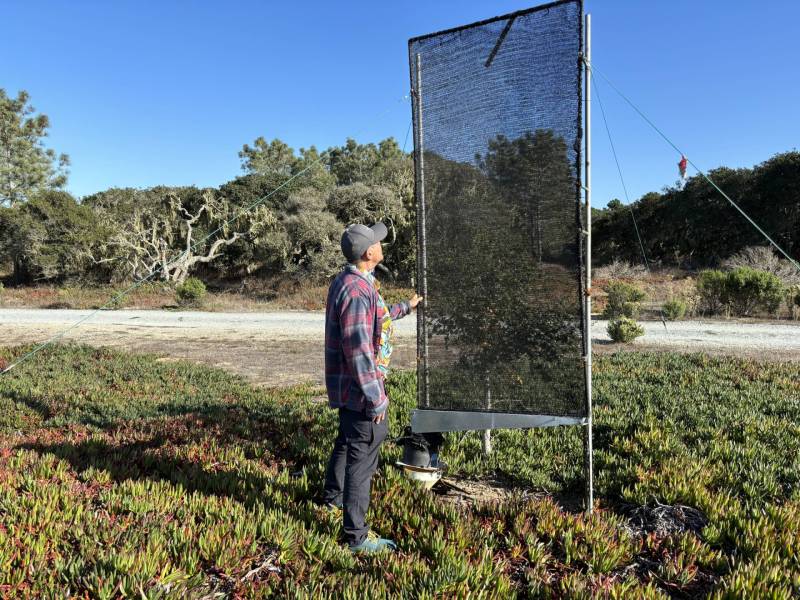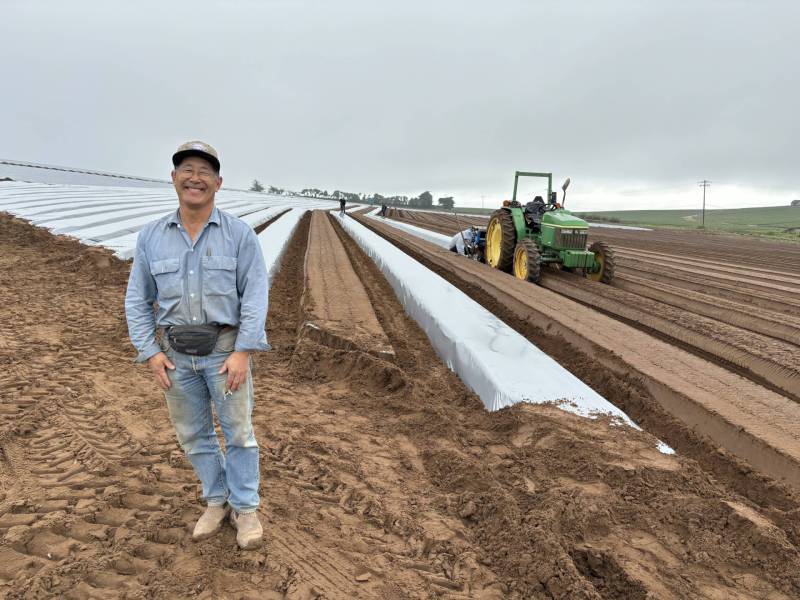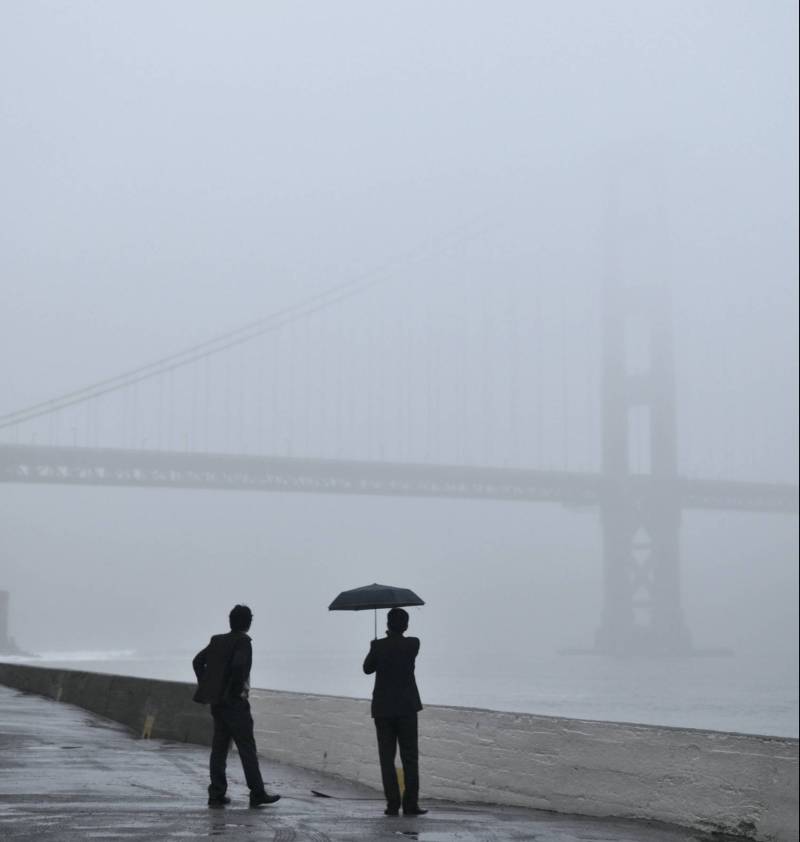Episode Transcript
This is a computer-generated transcript. While our team has reviewed it, there may be errors.
Olivia Allen-Price: Lily Drexler grew up in San Francisco. And as anyone who lives in San Francisco can relate to… she has a complicated relationship with fog.
Lily Drexler: I both love and get frustrated by the fog.
Olivia Allen-Price: On the one hand…
Lily Drexler: I appreciate how it freshens the air. I appreciate how it changes things up.
Olivia Allen-Price: But, it can get old.
Lily Drexler: When there is fog for, you know, a week, weeks on end with no break, that does get frustrating.
Olivia Allen-Price: I feel you, Lily. Lily rents in the Richmond district right now… and she’s thinking of settling down in San Francisco more permanently, maybe even investing in some real estate. But before she does that, she has some questions about fog.
Lily Drexler: Is it going to get more foggy as the sun bakes the ocean and creates the moisture, if that’s how fog works? Or is it going to get less? Is the heat and the warming of the planet going to decrease the fog?
Olivia Allen-Price: As climate change alters everything in our region … where does that leave fog?
Where should a fog-averse city dweller settle down? We’re going to answer that question … but we’re also going to zoom out and look at fog’s future in the Bay Area at large. How do we rely on fog now…and how might its absence change us? I’m Olivia Allen Price and you’re listening to Bay Curious.
Sponsor message from Sierra Nevada Brewing Company
Olivia Allen-Price: What does the future of the Bay Area’s fog look like, Lily Drexler asked Bay Curious… We sent reporter Dana Cronin out to get some insight…
Curious music
Dana Cronin: It’s a foggy day in Monterey. At least, I thought it was.
Dan Fernandez: The fog literally has to be at ground level. So I would call this low cloud, which might become fog.
Dana Cronin: This is fog expert Dan Fernandez. He’s a professor at CSU Monterey Bay. As you can tell… I have a lot to learn about fog before I try to answer Lily’s questions. And Dan’s gonna help me.
Dana Cronin: He’s been studying fog for more than a decade. Before he studied it, he was an electrical engineer and worked on measuring ocean surface currents. He thought about fog from time to time. But his real fascination with it came to him during a meditation retreat. He says he was sitting there meditating. It was a hot day. And he was thirsty.
Dan Fernandez: And of course when you’re meditating, minds go all sorts of places and this is where my mind went, went into water and then fog.
Dana Cronin: More specifically, he wondered whether he could catch fog… as in pull it out of the air and collect it as a liquid. Turns out… you can.
Dan Fernandez: So this is one of ten of the larger fog collectors that I and a class of mine deployed here back in spring 2018.
Dana Cronin: We’re standing next to a fog collector. It’s basically a big, 4-by-10 piece of mesh reaching into the sky with a trough underneath.
Dan Fernandez: So fog hits here on all of them, drips down, runs down this trough. And you can see birds visited, too. Even though I have bird spikes there, the water runs into the rain gauge. It goes through the rain gauge. It’s recorded here. And I have a data logger in there that records all the volume of water going through.
Dana Cronin: Because it’s apparently not a foggy day today… there’s no water in the buckets. But when it’s SUPER foggy, Dan says he’s collected as much as nine gallons in one day.
Dana Cronin: You might wonder what the point is of catching this fog. Could it be enough to help offset California’s water shortage during drought years, for example?
Dan Fernandez: There’s certainly not enough for us to consume the amount of water we consume.
Dana Cronin: So, no. But, Dan says, it could help farmers with irrigation. Or provide water for reforestation… which Dan’s fog collectors are working on now. He hasn’t had them set up for long enough to figure out whether there’s been more or less fog over time. And he says that question… how climate change is impacting fog… isn’t that simple.
Dana Cronin: There’s no general consensus in the science community about what will happen to fog in the future. In fact, they can hardly agree on how to define it.
Dan Fernandez: There’s a few ways to define fog and there’s somewhat overlapping, which kind of illustrates the sort of the complication when trying to define something like fog.
Dana Cronin: According to Dan, for something to be considered “fog,” it needs to have three things. One:
Dan Fernandez: So fog consists of water, tiny little droplets that vary in size between one-micron diameter spheres and 50-micron diameter spheres.
Dana Cronin: Your hair is about 100 microns. So these water droplets are thinner than that… so thin that they float in the air.
Dan Fernandez: But there have to be enough of these droplets to impede our visibility to be less than one kilometer. Then it’s defined as fog.
Dana Cronin: If you can see beyond one kilometer, then it’s considered mist — NOT fog. And thirdly…
Dan Fernandez: Fog is a cloud that’s in contact with the ground.
Dana Cronin: So, fog has to hover near the ground, it has to limit our visibility to one kilometer… and it consists of droplets between one and 50 microns. Simple, right?
Dana Cronin: And for that cocktail of ingredients to come together and form fog… we need a temperature gradient, as in something warm and something cool, like the cool ocean and the hot Central Valley, for example. As cool ocean air reaches land and warms up, it condenses and forms fog. It’s a complex phenomenon! But that’s why Dan likes it.
Dan Fernandez: I find fog mysterious, fascinating, it can be scary and exciting. It’s all of those. I think that’s part of what makes it such a special thing to study.
Dana Cronin: But it also makes it a difficult thing to study… and to predict. You can’t forecast it the same way you can forecast rain and thunderstorms. And that’s why scientists don’t know exactly how climate change is impacting fog. But Dan says they have an idea…
Dan Fernandez: You know, on the whole, I think that we’re going to probably be seeing less fog in general and that we have that we are currently seeing less than we may have seen a generation ago.
Dana Cronin: Some studies have shown that since the 1950’s fog has declined about 30% during the summertime. But Dan says there’s still a lot of uncertainty in the fog science community. For example… that decline could come from the fact that a lot of cities have cleaned up their air since the 50s… so fog has fewer particulates to cling to. Meaning, perhaps there’s less of it not because of climate change — but because of changing air quality standards.
Dana Cronin: And some studies completely contradict that… at least one used observational notes from ships off the coast of California to suggest fog is getting heavier.
Dana Cronin: But, according to Dan, there’s some level of consensus that fog is on the decline. And if that’s true… there would be consequences here in northern California. Because, as it turns out, we rely on fog in all kinds of ways — both big and small. I’m gonna walk you through a few of them. Starting with something we’re known for. Our food.
Dana Cronin (in tape): It is a very foggy day on the farm here. Wow.
Dana Cronin: No, for real this time. I’m at Shinta Kawahara Company farm in Watsonville, about a half mile from the ocean. I’m meeting up with farm owner Rod Koda.
Dana Cronin (in tape): Can you usually see the ocean from here?
Rod Koda: Yes. We’re in the Monterey Bay. Um, on a nice day, I could see Pacific Grove and all the way to Santa Cruz. But not today. We got fog. It’s nice. Perfect.
Dana Cronin: Rod grows strawberries. Today his crew is preparing for planting… using a tractor to lay down plastic to protect the strawberries.
Tractor sounds
Dana Cronin: Rod says the fog is actually helping this process.
Rod Koda: It comes out really nice because it’s last that the dirt is a little softer.
Dana Cronin: And it helps in other ways too. Rod says in other parts of California where strawberries are grown… like Salinas and Gilroy… it’s warmer, and the berries ripen more quickly. One heat wave and the berries have to be picked immediately. Whereas, thanks to the fog, Rod has more flexibility.
Rod Koda: Here along the coast with the fog. The temperatures are cooler, which the berries ripen slower and get more sugar content.
Dana Cronin (in tape): So you’re saying they’re better strawberries along the coast with the fog influence or, well, tastier.
Rod Koda: Exactly
Dana Cronin: In addition to temperature… strawberries also rely on the moisture from fog… says environmental professor Sara Baguskas.
Sara Baguskas: We learned that strawberry crops have greater water use efficiency during fog events compared to non-foggy periods.
Dana Cronin: That basically means that strawberries don’t need as much water when it’s foggy. Sara’s team also found that the strawberry plants use sunlight more efficiently when it’s foggy.
Sara Baguskas: Even though the total amount of light that’s used by plants is lower, it’s like dimmer, but the photons are scattered and so more of the leaves are engaged in photosynthesis in the plant.
Dana Cronin: So basically, when it’s foggy, strawberry plants are more productive and need less water. Rod has noticed that on his farm.
Rod Koda: We typically have fog in July and August. And usually our volume is up during those times.
Dana Cronin: He says he hasn’t really noticed any major changes in the fog patterns in the decades he’s been farming. Every year feels different, he says. But if what fog scientist Dan Fernandez said is true, and there won’t be as much of it in the future, farmers like Rod might have to compensate. In the future, growing strawberries could require more water… and farmers might not have as much flexibility around when they harvest as they do now. And for us consumers… the berries might be less tasty and more expensive.
Music
Dana Cronin: Besides strawberries… there are many other ways the disappearance of fog could impact the Bay Area. So many of our ecosystems here rely on it —todd both for moisture and for the cooler temperatures. Redwood trees, for example, are natural fog catchers… they basically drink it and need it to survive. It’s why they’re unique here to Northern California.
Dana Cronin: Fog scientist Dan Fernandez says there are many other species that rely on it, too… including manzanita trees and even some types of lizards.
Dan Fernandez: And so when one element of an ecosystem is impacted, how does that affect others?
Dana Cronin: Fog may even protect us to some extent from wildfires. The moisture it provides acts as a fire retardant… and without it, Dan says many more areas would be susceptible to megafires. Overall… the loss of fog would fundamentally change the Bay Area.
Music ends
Olivia Allen-Price: OK Dana, but there’s one part of Lily’s question that’s still missing… where should she invest in property?
Dana Cronin: Well… like I said in the story, fog is really hard to predict. There isn’t a neighborhood-by-neighborhood projection of what its future looks like in San Francisco. But… I did reach out to a real estate agent to get their take on the situation.
Alex Clark: A lot of my clients ask me like, So what’s the fog like with what are you going to do? And luckily, I know a lot about like the weather and just all the patterns and wind and which side of the street’s better…
Dana Cronin: This is Alex Clark, owner of Front Steps Real Estate in San Francisco. He told me fog is a really important thing to factor in when buying property. And while he’s no fog scientist… and doesn’t know what will happen in the future… he says the most important thing is to buy in a neighborhood that you can see yourself living in now.
Alex Clark: If it’s of concern to people, I would literally counsel them and say this house is going to be in the fog. If it’s a problem, then we probably need to look elsewhere.
Olivia Allen-Price: Well, that’s something! Good luck in your search, Lily.
Music
Olivia Allen-Price: That story was reported by KQED’s Dana Cronin.
Olivia Allen-Price: Next week, our December Bay Curious newsletter goes out. We ventured to a Christmas Tree Farm in Petaluma to learn about the year-round work that goes into growing the perfect tree. It’s part of our unusual jobs series in the newsletter. Be sure you’re subscribed at baycurious.org/newsletter.




